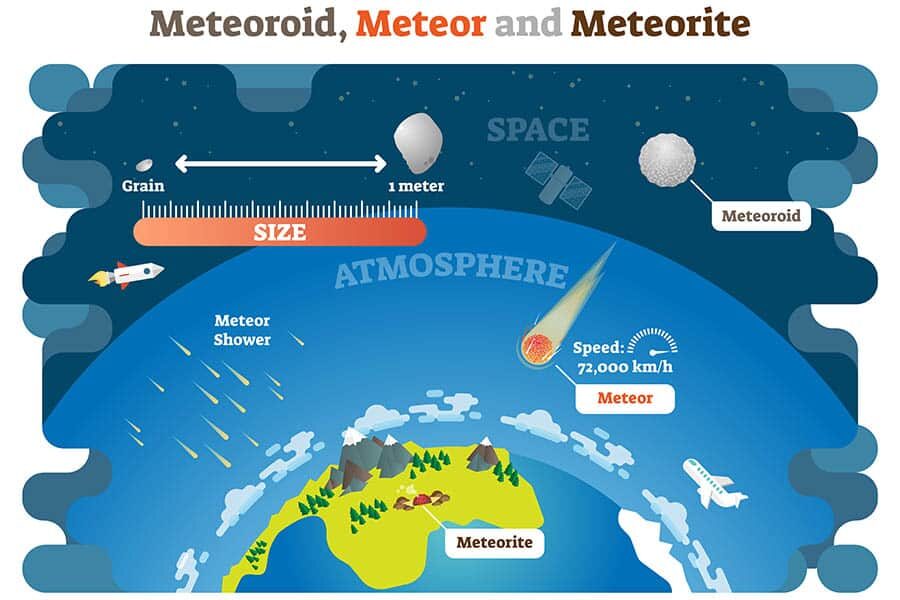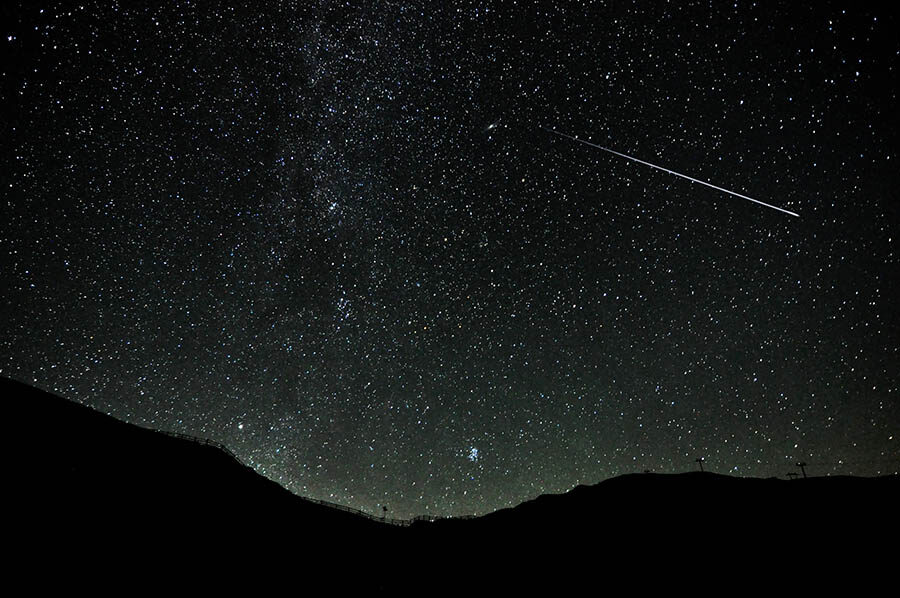Meteor vs Meteorite vs Meteoroid – What’s the difference?
You’ve probably heard of both meteors and meteorites, as well as a whole host of other objects that are out there in our solar system. However, it can be very difficult to keep up with all this, and even know what the differences between them are. The truth is that in many cases, they represent very similar objects, and in the case, the same object – just at different points in their life.
So what is the difference between a meteor and a meteorite? Well, let’s have a look and find out.
The difference between a meteor and a meteorite is quite simply the stages that they are in. When a meteoroid is within Earth’s atmosphere flying through the air, we call that a meteor. However, if that meteor makes it to the Earth’s ground without being destroyed, then it is then called a meteorite.
So, a meteor, a meteorite and a meteoroid are all the same object, but we refer to them by a different name depending on which part they are in their journey.

Though you may hear them being referred to as a small asteroid or space rocks due to their rocky bodies, there is a good reason why we actually like to call them by their technical name – here’s why.

Before a meteor enters into the Earth’s atmosphere, we call it a meteoroid. A meteoroid is simply defined as a small object that is moving through interplanetary space. However, it’s worth mentioning that they are relatively small in comparison to asteroids, but can still be quite large.
Meteroids tend to originate in the asteroid belt, but they can also be parts of a comet too (comets generally come from further out in the Kuiper belt). They move at speeds of up to 100,000mph, and orbit the Sun in an ellipse pattern.
The majority of all meteoroids are primarily comprised of similar materials, having a large amount of nickel and iron. However, we split them into three categories based on their composition – stone, iron and stony iron. We can tell more of what a meteoroid is comprised of when it enters the atmosphere and starts to burn.
And when a meteoroid enters into our atmosphere solo, we may refer to them as a shooting star. When they enter the atmosphere together, we refer to them as meteors showers. These meteor showers are sometimes also called a meteor streak too, as you can see their trail spread across the night sky.
After a meteoroid enters into the Earth’s atmosphere, we then refer to it as a meteor. We may also refer to a meteor by a few other names, such as a falling star.
When it enters into the Earth’s atmosphere, it is going at such a speed that it’s friction with the atmosphere begins to heat up the meteor. Actually, a meteor can make it through some layers of the atmosphere fine (it’s fine going through the exosphere and the thermosphere, but it burns when it reaches the mesosphere).
As it gets closer to Earth, it will shine brightly in a color dependent on what it’s comprised of. For example, if a meteor has a lot of iron, then it will shine yellow. However if a meteor shines red, then it tends to have a lot of nitrogen and oxygen).
A very small percentage of meteors make it through to land on the Earth. But when they do, we refer to them as meteorites.
A meteorite is just the debris from the meteor, and they can be quite rare (they’re actually even more rare than diamonds!) which makes them quite valuable. There are estimated to be around 500 meteorites that make it to Earth every year, but very little of this number is discovered.
Yes, exactly! A meteor and a meteorite are one and the same, however the vast majority of meteors don’t make it to the Earth’s surface to be classified as a meteorite. They are just different stages of the same object.
Many meteors are made up of rock, iron and nickel – each different meteor will have a different percentage of each of these materials.
Meteors that make it all the way to Earth can have a composition of both gold and diamonds.
The rarest type of meteorite is the stony-iron type which, as the name suggests, contains equal amounts of iron and stone.
Meteoroids are generally disintegrated parts of either asteroids, or comets. They enter Earth’s atmosphere at a fast speed, either alone or in groups with other meteoroids, which is what is known as a meteor shower. You may also seem them referred to as shooting stars.
Hopefully this has cleared up any differences for you between meteors, meteorites and meteoroids – they’re all the same thing! However, we just refer to them by a different name depending on how far they are along in their long voyage to our planet Earth.





